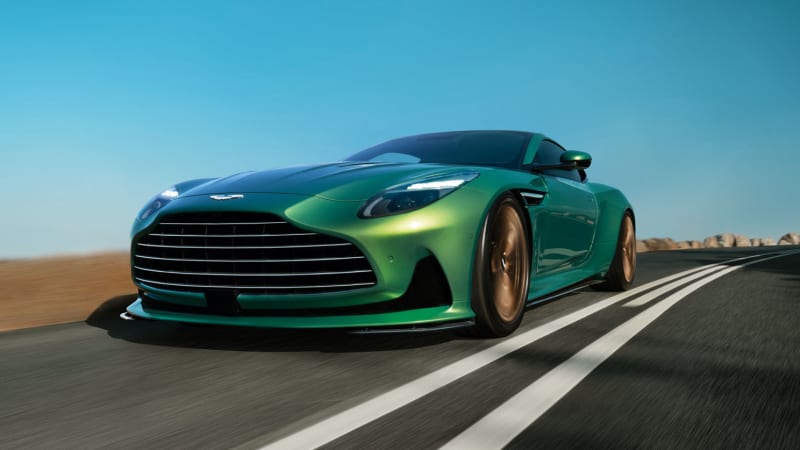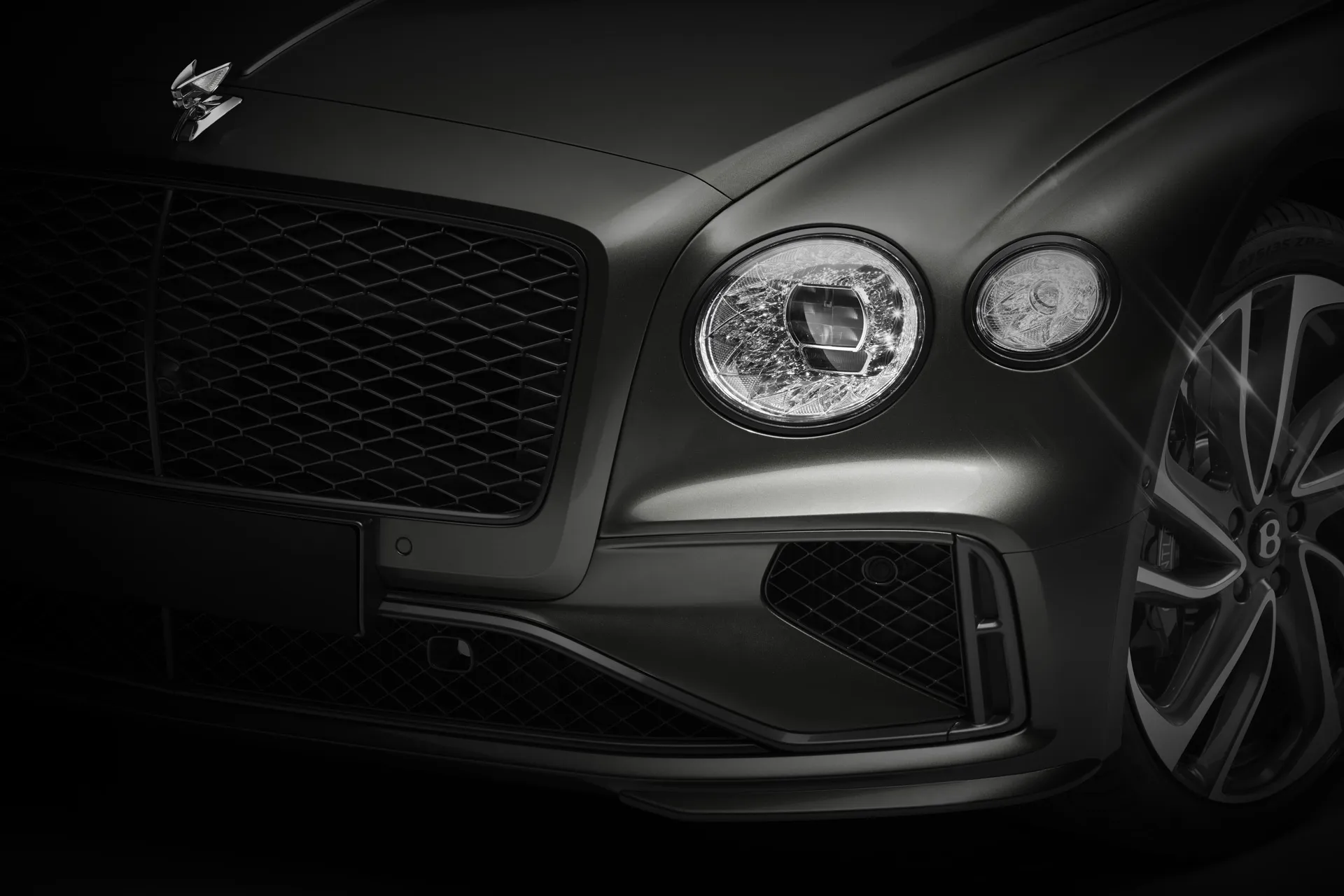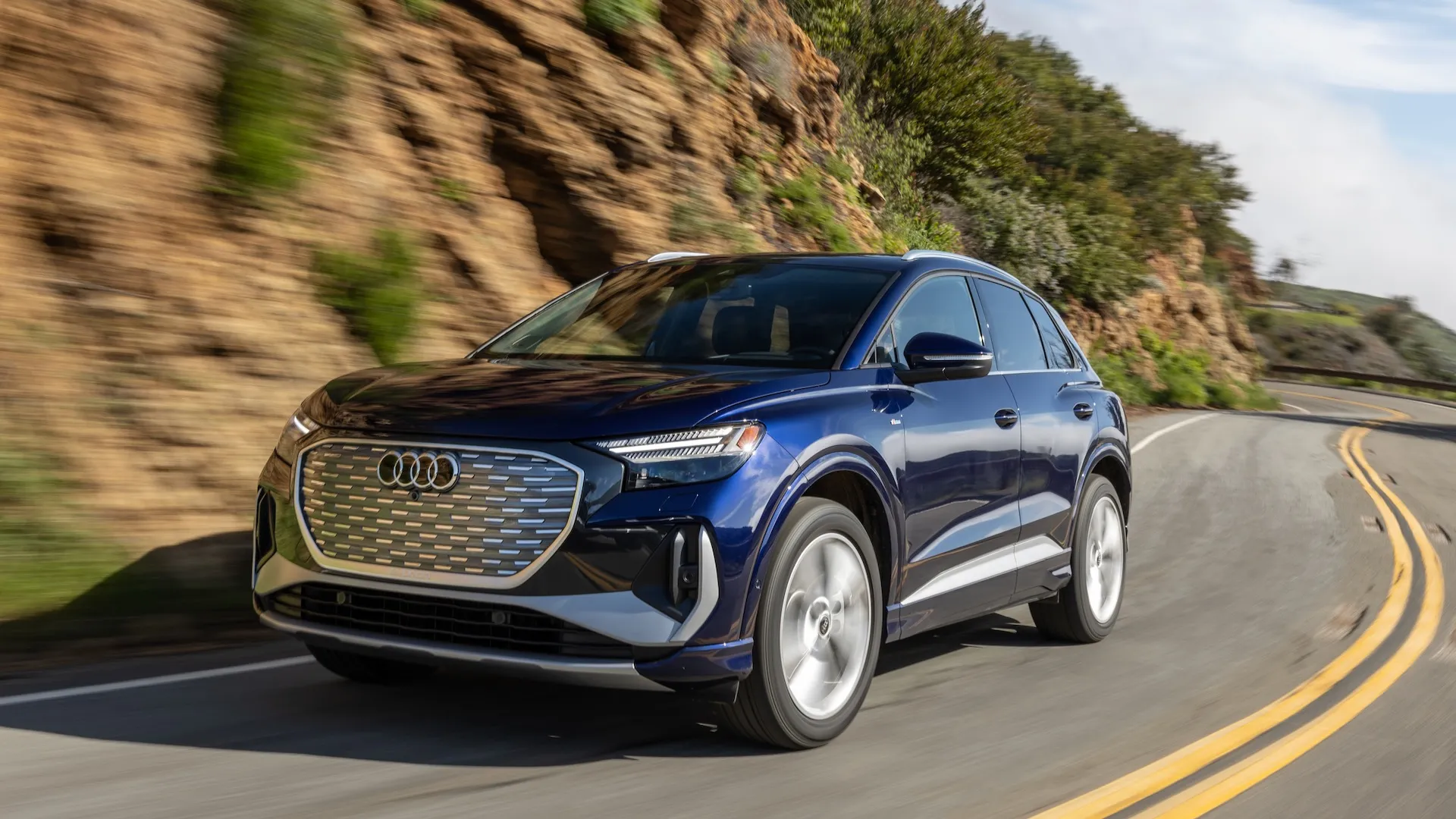
Although it still turns heads, the Aston Martin DB11 has reached the end of its life cycle. Its successor, the Aston Martin DB12, keeps the shapely proportions but inaugurates a new design language while offering more tech features and a far more powerful twin-turbocharged V8.
Marketed as a Super Tourer (as opposed to a Grand Tourer) by the British brand, the DB12 lands as an extensively updated evolution of the DB11. “The DB12 [has] 80% new components compared to the outgoing DB11,” a company spokesperson told me.
Designers gave the front end a bigger grille, new-look lights, and a redesigned splitter. They also widened the front and rear tracks to give the coupe a more muscular-looking stance, and the DB12 inaugurates the subtly redesigned emblem that all future Aston Martin models will wear. The distinctive vents behind the front wheels remain, and the visual modifications made to the rear end of the car are more minor.
Inside, the big news is a new, touchscreen-based infotainment system developed in-house. This is significant: Many of the brand’s current models use an older, Mercedes-Benz-derived infotainment system controlled by a touchpad and a dial. The new system is displayed on a 10.25-inch touchscreen and it’s compatible with both Android Auto and Apple CarPlay. Aston Martin notes that this is the first infotainment system it has developed in-house, and it’s more than reasonable to assume the software will trickle down to other cars in the coming years.
And yet, the DB12 isn’t 100% digital. Sure, the driver faces a digital instrument cluster, but buttons on the slanted center console give the passengers access to many key functions including the climate control system, the sound system’s volume, and the exhaust settings. One surprising addition is the shifter: It replaces the shift buttons found in the DB11 and should make maneuvers more straight-forward.
Power comes from a 4.0-liter V8 that’s twin-turbocharged to develop 671 horsepower at 6,000 rpm and 590 pound-feet of torque from 2,750 to 6,000 rpm. Aston Martin borrowed this engine from Mercedes-AMG; it’s the same basic unit found in cars like the E63, the G63, and the DBX, but it has been tuned in-house. It spins the rear wheels via a carbon fiber driveshaft and an eight-speed automatic transmission.
This is a huge increase. For context, the outgoing DB11 uses a version of this eight-cylinder rated at 528 horsepower and 513 pound-feet of torque. Buyers can also select a 5.2-liter V12 — which isn’t available in the DB12 — that posts figures of 630 and 516, respectively.
Aston Martin quotes a 0-to-60-mph time of 3.5 seconds and a top speed of 202 mph. The powertrain’s layout should ensure that the DB12 handles as well as it accelerates: The engine is front-mid-mounted, and the gearbox is integrated into the rear axle for better weight distribution. Enthusiasts will have five driving modes called wet, GT, sport, sport plus, and individual, respectively, to choose from.
There’s more electronic wizardry concealed under the sheetmetal than we’ve come to expect from Aston Martin. Its engineers added an electronic rear differential — a first for the brand — for quicker cornering, torque vectoring, and four ESP modes. Steel brakes come standard, and a carbon ceramic braking system that reduces brake fade and unsprung weight by nearly 60 pounds is optional.
Aston Martin DB12 deliveries are scheduled to start in the third quarter of 2023. Pricing will be announced at a later date, and the final figure will depend on the number of boxes that buyers tick on the list of options. It sounds like the sky is the limit: Customers can pay extra for special paint colors (including hues borrowed from the company’s classic models), carbon fiber exterior trim, and carbon fiber sport seats.
Credit : Source Post






